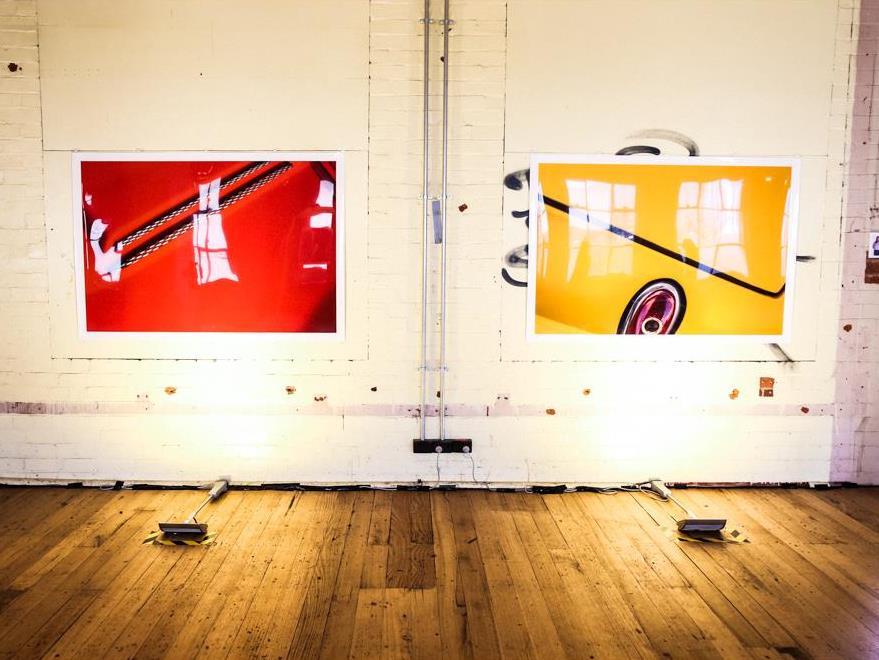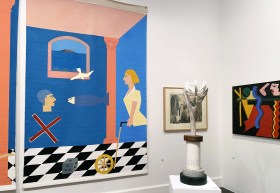Photography by Artist Cindy Chen. Image supplied.
The re-invigorated Bachelor of Design Arts proves that there is still room for the revision of arts pedagogy in the higher education sector. Offered exclusively in Victoria by the Academy of Design Australia, this degree cleverly blends interdisciplinary engagement with specialist studies.
Students are able to major in one of six different disciplines, choosing from communication design, interior design, film and photography, fashion and costume design, graphic and digital design, or visual arts. They then also select a sub-major from one of the remaining disciplines. This, coupled with a range of common units across the course, encourages interdisciplinary practice and is supported with the practice of real life project-based assessments that give students the opportunity to blend the disciplines together.
‘Students self-select into the major and sub-major they want to do, but often we guide them into complementary areas. For example, a student who chooses graphic and digital design as their major may then also want to specialise in communication design as their sub-major if they want to go into marketing and advertising,’ explained Academic Dean Terese McAleese.
‘We couple our majors and sub-majors to create an interdisciplinary body of work that adds value to the student experience. The whole is more than the sum of its parts.’
This interdisciplinary approach to training extends to the 22 core units that all students complete as part of the Bachelor degree. ‘These core units are interlinked with the students’ major. While we might deliver a core unit such as “design concepts” in a generic way, the assessment is really connected to the major unit of study,’ said McAleese.
‘We believe that we promote creative thinking and creative problem solving and actually produce graduates who are ready for the creative industries.’
McAleese said while the program’s uniqueness is the embedded principle of interdisciplinary practice to support student learning, it is also the model of delivery.
‘We have a really strong community in the Academy and there’s a strong feeling of support where students are really keen to be involved in each other’s work and help them out with whatever assignments that they may be working on,’ said McAleese.
‘Just recently we had a graduate show where our students pulled together their collections for exhibition and it was really pleasing to see students in other students work…They don’t need to be students from the same discipline either, everyone is really supportive across disciplines.’
The synergy McAleese describes was carefully designed through the structure of the Bachelor of Design Arts. When students are studying a core unit they come together regardless of their specialisation. This gives students the opportunity to have a particular cross-discipline reflection in the program that often leads to these creative collaborations.
Future plans for the Bachelor of Design Arts
There is a lot of change happening behind the scenes at the Academy of Design. In January 2018 the education provider will change its name to LCI Melbourne and relocate to a new campus — a converted warehouse in Collingwood, Melbourne.
As part of this transformation, the academic calendar will also shift to trimesters to allow students to seamlessly join a study period abroad at over 20 LCI Education network campuses, from Barcelona to Montréal, while also accelerating their studies so they can complete their Bachelor degree in two years.
McAleese and the academic staff at the Academy of Design Australia are currently reviewing the delivery of the program. ‘We are looking at developing learning models so we can reduce the amount of time that a student needs to spend in the classroom, and so they can actually work outside of the classroom in preparation for coming into the classroom,’ she said.
‘For me it is really about developing a real value approach to classroom connectedness, so students will see the value of coming to share their knowledge and their experiences and using the teacher more as a facilitator of learning rather than a model of lecture type approach. We are really using some cutting edge pedagogical approaches to the way that we actually do our learning, keeping our assessments project based and externally focused.’
One solution they are exploring is the opportunity to facilitate student learning by engaging community groups that would benefit from the work students typically do for assessment.
‘Rather than just getting our students to do assessments for the sake of assessment, we want to actually get the students to work on community based projects and developing solutions for community needs.’
For more information visit www.academyofdesign.edu.au






